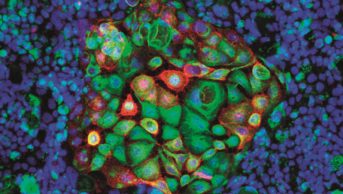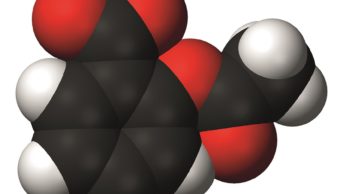
Zephyr / Science Photo Library
Five out of six women at high risk of breast cancer decline preventive medication, and those who opt for treatment often fail to take the drugs for long enough for them to have the full effect, according to the findings of a meta-analysis published in the Annals of Oncology
[1]
on 9 December 2015.
Only 16.3% of women at increased risk choose to take chemopreventive agents. Up to 80% of women who opted for a five-year course of treatment took the drugs for at least a year but this then fell over time, researchers at Queen Mary University of London found.
Around 51,000 new cases of breast cancer are diagnosed in the UK each year but as many as 27% are preventable. Women with a family history of the disease can be offered preventive treatment with Selective Estrogen Receptor Modulators (SERMs), such as tamoxifen and raloxifene, to reduce their risk, as recommended by the UK’s National Institute for Health and Care Excellence (NICE) in 2013.
However, women who take SERMs face a small increased risk of venous thromboembolic events and endometrial cancers, research suggests, and menopausal symptoms such as hot flashes and vaginal dryness can become more common.
The researchers assessed 26 international studies including a total of 21,423 women. Uptake was higher in trials, with 25.2% choosing treatment, compared with usual care settings where only 8.7% opted for treatment.
The analysis found some evidence that concerns about side effects may affect uptake and adherence, but further research is needed to confirm the importance of this as a factor. Researchers say accurate side effect data should be given to women concerned about safety.
They also found women were more likely to choose preventive treatment if they were at higher risk, had an abnormal biopsy or their doctor recommended medication. Adherence was lower when women were given tamoxifen rather than placebo or raloxifene, had depression, smoked or were older. Researchers say poor adherence limited the preventive effect of the drugs in these women.
Uptake may be even lower in the general population, the researchers warn, as these studies only included women actively seeking advice about breast cancer risk. They also suggested that prescribing concerns among clinicians may also limit use of preventive treatments in routine care, particularly in countries where tamoxifen and raloxifene are not licensed for prevention. Providing appropriate support and training may encourage the use of preventive therapy in care, they say.
“These data suggest the focus for future research should be directed towards supporting decision-making at the point of uptake, as well as ensuring mechanisms are in place to promote longer-term persistence among women who have initiated therapy,” the study authors write.
Martin Ledwick, head cancer information nurse at Cancer Research UK, which funded the research, says: “We need to find out more about how women at higher risk of breast cancer make decisions about the different ways they can reduce the risk of developing the disease to make sure that they have the information they need to make the choice that is right for them.”
Samia al Qadhi, chief executive of the charity Breast Cancer Care, says: “The next step must be to fully understand and tackle the reasons behind this low uptake and why some women may not be completing their treatment. And most importantly we need to ensure women are told about the pros and cons of all available options to help reduce their risk, so they feel empowered to make an informed personal choice.”
References
[1] Smith SG, Sestak I, Forster A et al. Factors affecting uptake and adherence to breast cancer chemoprevention: a systematic review and meta-analysis. Annals of Oncology 2015. doi:10.1093/annonc/mdv590


